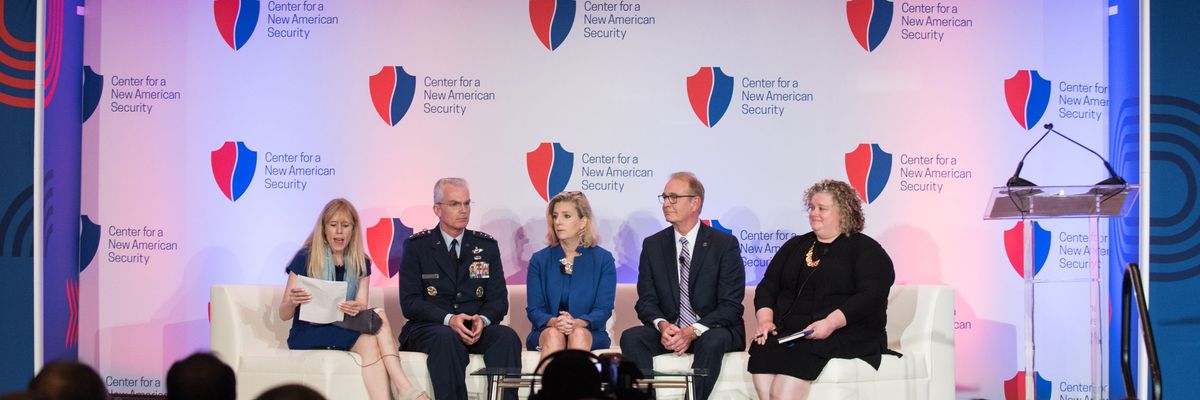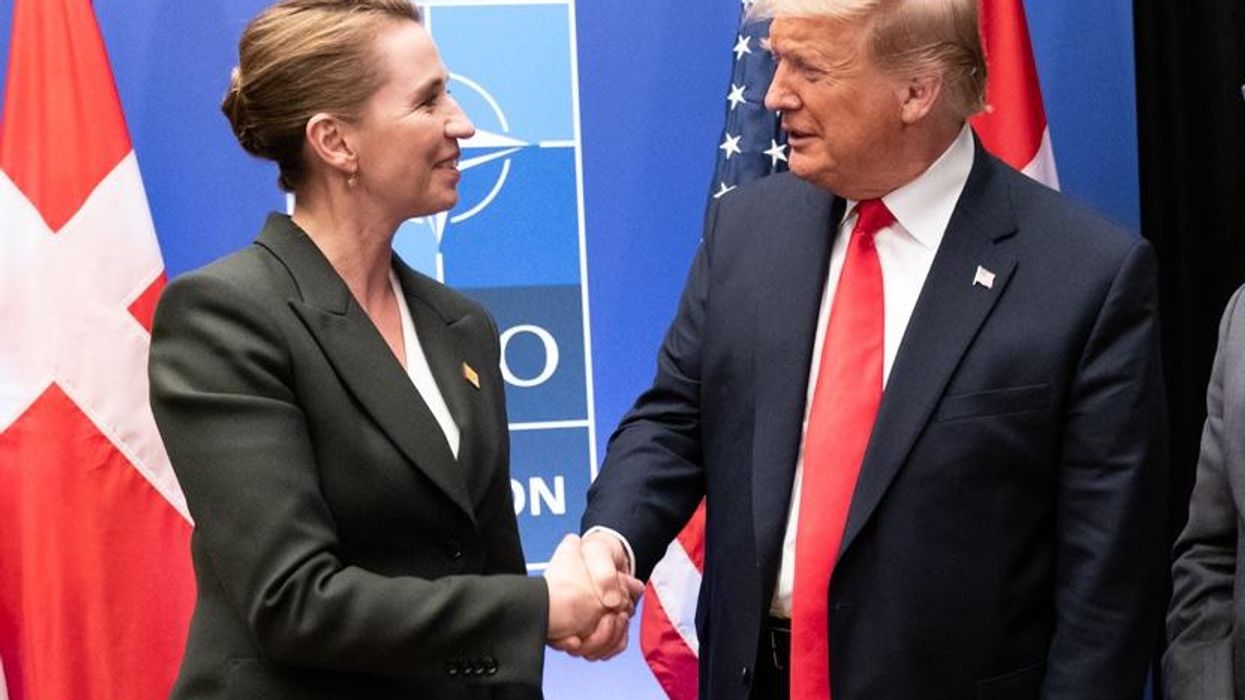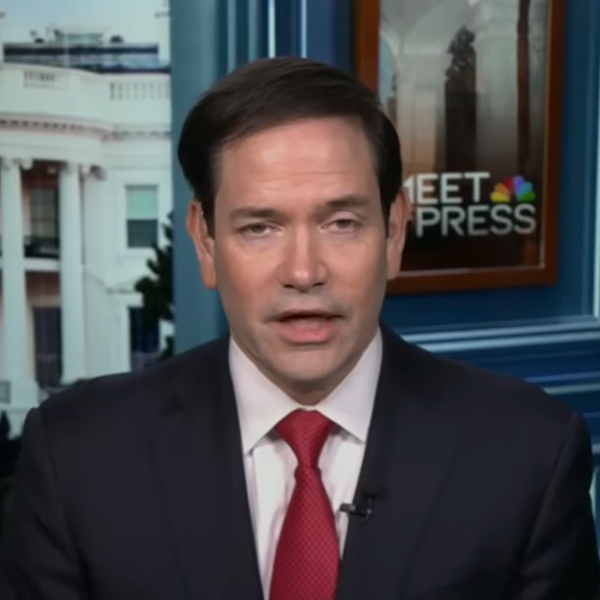Think tanks shape discourse and policy through testimony and media coverage, and employ experts who claim to be unbiased — simply putting forth ideas to win out in the free market. This market, however, is rigged.
It’s well known that Pentagon contractors spend hundreds of millions each year on lobbying, but the other powerful weapon contractors wield to influence U.S. national security priorities — think tanks — is often ignored. A report released today from the Foreign Influence Transparency Initiative, or FITI, at the Center for International Policy, where I work, reveals more than $1 billion in defense contractor and U.S. government funds flowing to the top 50 most influential U.S. think tanks from 2014-2019.
It is part of a think tank’s role to recommend policy, and putting ideas forth into debate can be a public good. However, when these ideas are linked to specific defense companies who stand to gain billions of dollars by promoting their systems — and play into the Pentagon’s narrative — think tanks have an obligation to let consumers of their work know if it is funded by those who will profit from their recommendations. Instead, in far too many cases, these funding links are obscured.
The Pentagon’s recent Naval expansion strategy, named “Battle Force 2045,” is a case in point of why this funding matters, as many of the think tanks backing this plan are incentivized to do so because they receive money from those who will benefit most from the plan. Prior to Defense Secretary Mark Esper’s release of the naval strategy at one think tank, CSBA, it was developed in large part by another think tank, the Hudson Institute, and was teased for release at a separate think tank: the RAND Corporation. In addition to these policy shops, which also receive government and defense contractor funding, the Center for a New American Security, or CNAS, has long advocated for and justified additional military investments.
Esper’s proposed 500-ship naval fleet will require hundreds of billions in taxpayer money. Secretary of Defense Esper’s urging comes as China is highlighted repeatedly as the greatest threat to U.S. national security — never mind that with COVID-19 over 212,000 U.S. citizens have died due to underinvestment in human security threats. Yet these plans, well above the long-advocated cap of 355 planned ships, should come as no surprise.
Esper’s speech demonstrates a confluence of policies, ideas, and funds that permeate through the system, and are by no means unique to a single service, think tank, or contractor. First, Esper consistently situated his future expansion plans in a need to adapt to “an era of great power competition.” CNAS is one of the think tanks leading the charge in highlighting the threat from Beijing. They also received at least $8,946,000 from 2014-2019 from the U.S. government and defense contractors, including over $7 million from defense contractors like Northrop Grumman, Lockheed Martin, Huntington Ingalls, General Dynamics, and Boeing who would stand to make billions if the 500-ship fleet were enacted.
Esper said a top priority for the Navy would be to “modernize the undersea strategic deterrent,” referring to ballistic missile-equipped submarines. CNAS published a report saying the Navy must “provide the undersea component of the nation’s Strategic Deterrent triad.” That undersea component, the Columbia-class submarine, is currently developed by General Dynamics with aid from Huntington Ingalls — who gave CNAS $225,000 and $550,000 respectively. Northrop Grumman, CNAS’s top funder at nearly $2.4 million, will design and produce the turbines. CNAS disclosed this funding on its website generally, but did not disclose funding from these firms in their report that specifically would provide a financial windfall to these companies.
Another example is Esper’s “preview” of what is to come by highlighting a recent call for nine guided missile frigates, totaling $5.6 billion. One of CNAS’s most vocal Navy expansion proponents penned an article recommending exactly this in 2017, and encouraged the Navy not to be afraid of past cost overruns, saying although budget mishandling was “significant and almost crippling,” that the Navy should not be “consumed by these failures” for future spending decisions. Again, we do not know who funded CNAS’s work on this topic, but we do know that the Department of Defense gave $600,000 to CNAS in the time frame examined.
The naval strategy is only the most recent example of the machine at work. The FITI report also points to CNAS advocating for the largest weapons system, B-21 stealth bombers, from their largest donor, Northrop Grumman. A 2018 CNAS report advocates for 164 instead of the planned 100 B-21s for the Air Force’s role in great power competition. It does not acknowledge Northrop Grumman’s funding or the fact that each bomber costs taxpayers more than half a billion dollars.
Certainly, most of these same statements and reports nod to the fact that the Pentagon has squandered bloated budgets in the past. Yet these same pieces advocate for further spending nonetheless. One report, focused on how to improve acquisition, even recommends investment in private venture capital for new technology, naming Boeing’s HorizonX and Lockheed Martin’s Lockheed Martin Ventures specifically, without disclosing in the report that Boeing contributed nearly $1 million and that Lockheed Martin gave $450,000 to CNAS in the time period examined.
In short, think tanks advocating for the financial interests of their financial backers is no isolated incident. It is simply the result of vested interests propagating the transfer of funds within a largely Beltway ecosystem. Many times, these contractors, military members, and think tankers move from realm to realm, and it is always helpful to continue business ties now to secure future positions later. As early as 2002, the State Department acknowledged a “revolving door” with think tanks — albeit as a strength. The leadership of the Heritage Foundation, CSIS, the New America Foundation, and CNAS, among many more, come from a background in government and defense.
To be sure, CNAS is far from alone among think tanks in providing policy recommendations without disclosing funding sources in context. In fact, this level of analysis was only possible because of the information they did offer. Other think tanks, like the Heritage Foundation, have advocated naval expansion at the same level of transparency as CNAS. Many other think tanks who towed the line were simultaneously much less transparent, including the Hoover Institute, which failed to even disclose its funding when a Hoover fellow delivered testimony in front of the House Armed Services Committee, and the American Enterprise Institute, along with ten other think tanks out of the 50 examined in the report that disclosed no donor information whatsoever.
There is no grand conspiracy moving the needle on defense issues. There is, however, an ecosystem wherein think tanks are financially incentivized to advocate for uninterrupted Pentagon spending and more money flowing to Pentagon contractors. Esper’s 500-ship announcement is just the latest industry-established narrative, propelled by think tanks taking money from the DoD and defense contractors themselves. Defense priorities should not be directed by those who profit from overspending. Transparency is the bare minimum owed to the American people in an industry so laden with conflicts of interest.
- Do venture capitalists want forever war? - Responsible Statecraft ›
- Witnesses backed by military, foreign $$ hype war with Iran | Responsible Statecraft ›
- Some 80% of Hill 'experts' take $$ from arms makers, foreign interests | Responsible Statecraft ›
- How corporate, foreign influence creeps into Congress | Responsible Statecraft ›
- First of its kind tracker cracks open DC's think tank funding | Responsible Statecraft ›
- Debate: Federal funding fuels failing foreign policy hive mind | Responsible Statecraft ›
- US think tanks are the world's least transparent | Responsible Statecraft ›
















